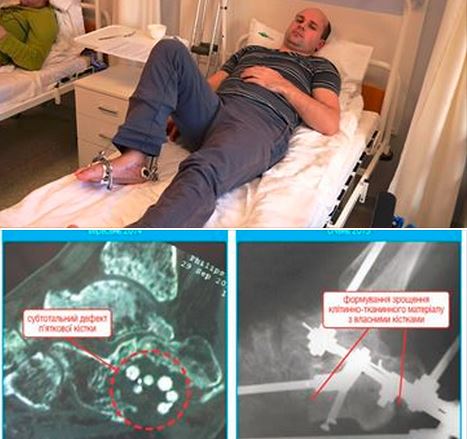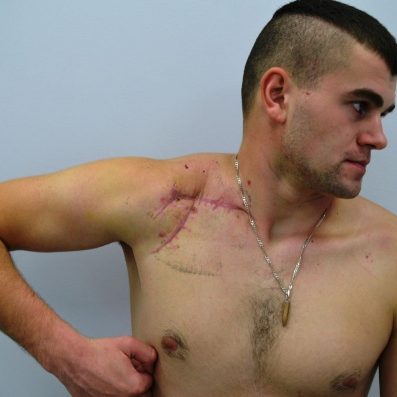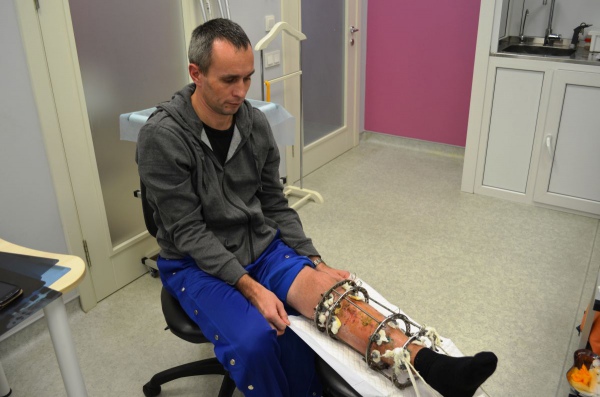
Based on implanting the patient’s own stem cells over a 3D model of the bone, the treatment method is the future for the next 5-10 years of medical science, Shershnev believes. He refers to his laboratory as a bona fide “stem cell plant” and hopes that in the future they will be able to grow actual human organs and even print them on a bioprinter using patients’ cells, although he admits that today it still remains in the realm of science fiction.
Shershnev recalls that the idea of using regenerative surgery came to the clinic’s workers when they learned of a woman injured in the shelling of Kramatorsk during the so-called “truce period": "She was seriously injured and was threatened with the possibility of her left limb length reduced by 6 centimeters. Also, significant dysfunction of the shoulder joint resulted in high probability of her being permanently disabled. So she became our first patient,” Shershenev remembers.
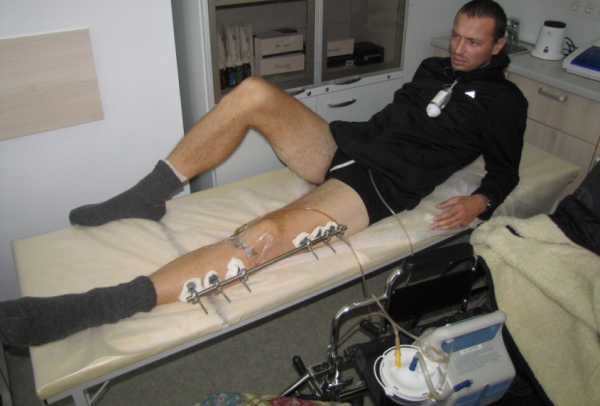
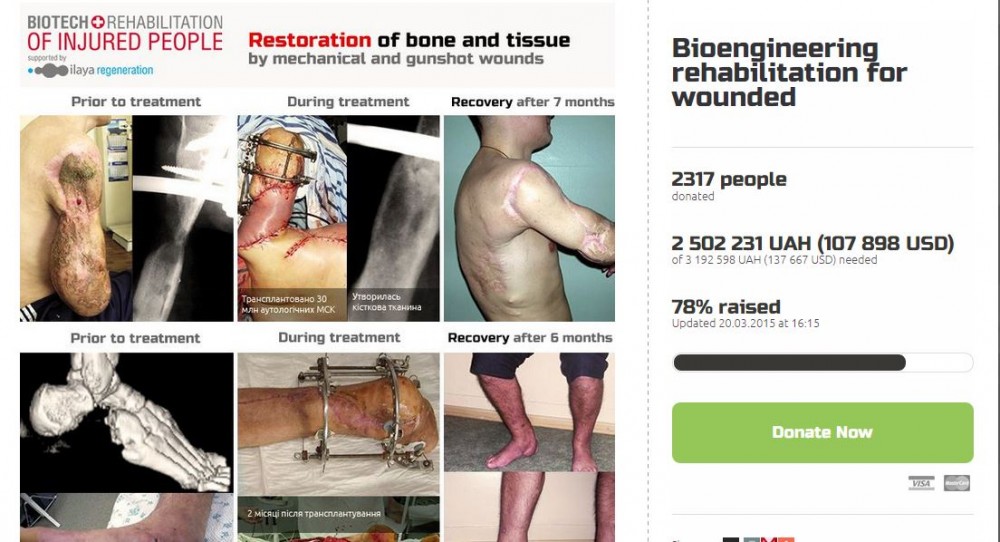
The origins of regenerative medicine in Ukraine
- The first stem cell experiments began in Donetsk in 2000 in the laboratory for cell and tissue cultivation at the Emergency and Reconstructive Surgery Institute. It initially was created with the aim of growing “artificial skin” for treatment of patients with severe burns (one of the most common work-related injuries in Donetsk Oblast) and was financed by various international organizations.
- Specialists, doctors and biologists from Donetsk Institute studied methods for cell cultivation in laboratories and medical centers in Germany, France, Russia, and Belarus. These methods were used not only in skin transplantation, but in treatment of coronary heart disease: laboratory-grown stem cells were implanted into myocardium zones that ceased to contract. When the cell activities resumed in these zones then surgeons proceeded with surgery. Such manipulations allowed avoiding heart transplantations. Since the patient’s own stems cells were transplanted, the patient did not need to receive immunosuppressive medication. In the Emergency and Reconstructive Surgery Institute 60 unique heart surgeries and 80 skin transplantations were performed.
- The first experiments on the cultivation of bone tissue began there as well. For these surgeries, bone carriers are used (3D matrixes created from bone chips) which are "saturated" with patient’s cells - after a few months, they cells embed themselves into the bone carrier. Such surgeries are considered unique for post-Soviet region and, according to Dmitro Zubov, are today performed only in Ukraine.
- Part of Donetsk’s biotechnologists and clinicians who were working in the Emergency and Reconstructive Surgery Institute moved to the Ukrainian capital Kyiv even before the conflict in the East Ukraine. Some of them are now working at a private clinic in which laboratory for growing cells was launched several years ago. The laboratory is not experimental but rather fully operational; in fact it is a cell production plant. For this, the patient’s adipocytes (fat cells) are extreacted via the liposuction procedure and then, in highly sterile conditions, stem cells are extracted from adipocytes. The biomaterial is then analyzed for bacterial and virus infections, after which the stromal stem cells are separated from the tissue. Then, the cells are placed in an incubator where they grow from 5 million to more than 100 million cells.

